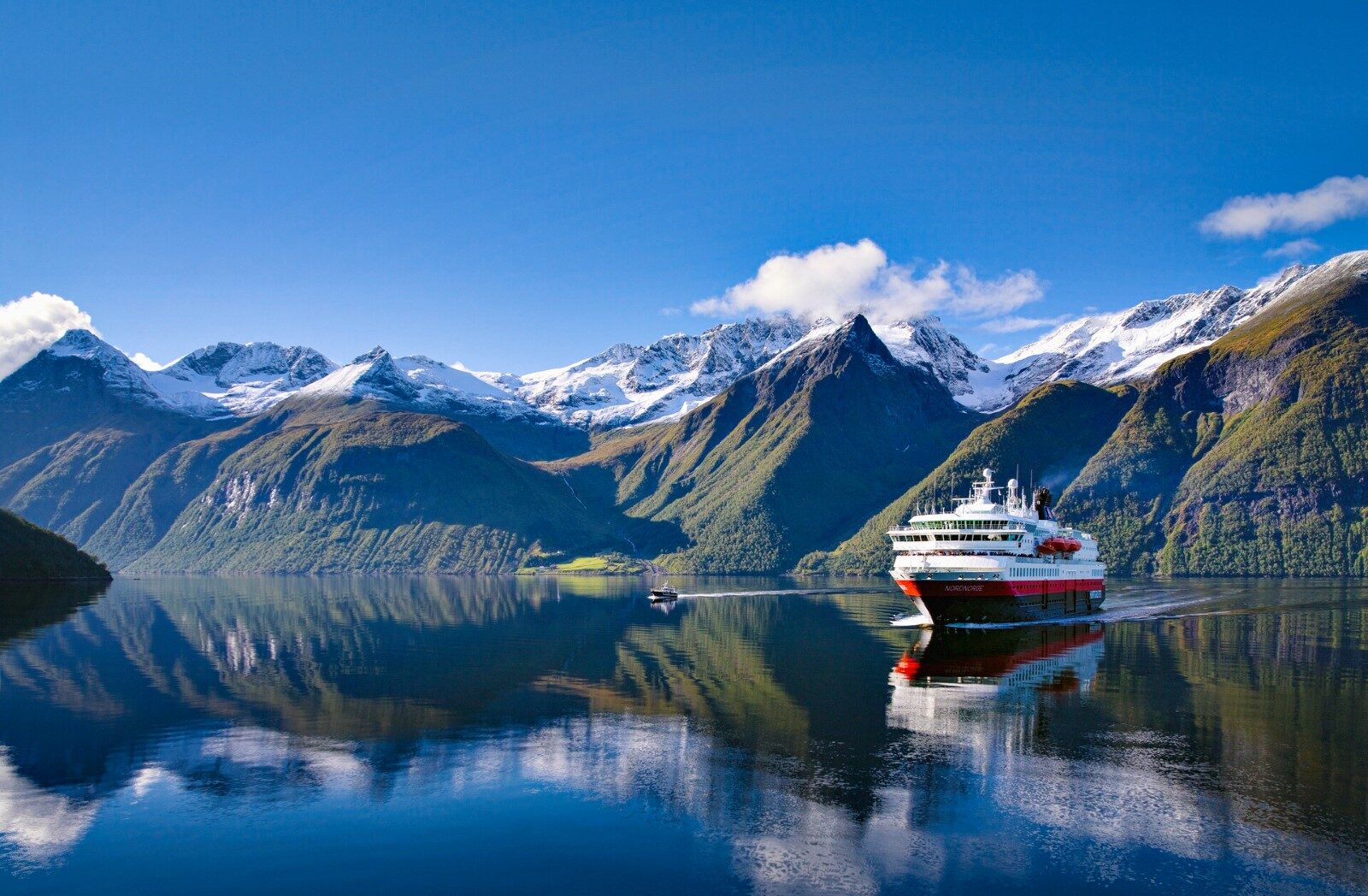At just about every turn, we, as the custodians of this planet, are seemingly intent on destroying the only home we know. It’s as if our world is spinning around inside a microwave oven; we see it overheating—we even smell it burning—but we can’t muster the effort to press the ‘cancel’ button.
In some respects, we are all equally guilty regarding environmental irresponsibility; shaming and singling out certain bad actors is no better than the dueling volunteer fire departments in 19th Century New York City that opted to fight each other rather than coordinate their efforts to put down a blaze. Who’s to say my jet-fueled trip from L.A. to Milan is any more justified than the landfill at the edge of town?

But truth matters, and in this era of fake news and pockets of siloed information, we must get our facts straight. According to the Climate Accountability Institute, over the past 30 years, just 25 private and state-owned companies have been responsible for over 50 percent of the world’s greenhouse gas emissions. Suppose fossil fuels continue to be extracted at the same rate over the next three decades. In that case, average global temperatures will rise by approximately 4 degrees Celsius. This almost apocalyptic-size change would lead to catastrophic consequences, including substantial species extinction and global food scarcity.
But wagging a finger at the petrochemicals industry is not much of an answer. To state the obvious, the oil and gas sector still plays a critical function in powering modern society. Still, its immense carbon footprint certainly begs an equally compelling question: Which companies are serious about addressing climate change and which are simply paying lip service?
Parsing corporate greenwashing from real action is not always easy; what CEOs say they are addressing and what their company is doing has been referred to as the “say/do gap.” The fancy wordsmithing found in annual reports and corporate websites is often markedly different from what frontline employees report witnessing up close. According to a recent report on sustainability leadership, many C-suite leaders cite climate change and pollution as critical issues. Still, their employees do not see meaningful action to back it up.

With this question in mind, Worth set out to identify and highlight ten globally impactful companies across a broad range of sectors that are making real strides in addressing their carbon output. This list is not a ranking–how does one compare the challenges of a sprawling fitness empire with that of a global cruise line? Instead, consider this a fact check on a host of globally recognizable brands living up to their promises.
1. Life Time: Healthy People + Healthy Planet

Over the past 30 years, Bahram Akradi, the founder, chairman, and CEO of Life Time, has successfully built the largest health lifestyle ecosystem across the U.S. and Canada. Today, the company offers nearly 160 sprawling athletic country clubs, a handful of coworking and residential complexes, and the rights to numerous marquee sporting events such as the Miami Marathon and the annual “Race Across The Sky” in Colorado.
With sustainability at the forefront of his business model, Akradi has relentlessly pushed his staff to embrace minuscule sustainability practices. Everything from the reduction of towel sizes to the elimination of single-use plastics has been addressed. Additionally, by simply replacing interior and exterior lighting with LEDs and installing advanced energy-management systems to optimize energy usage, Life Time was able to reduce its energy consumption by 38 percent and lower its water usage by nearly 60 percent.
Seemingly tiny adjustments merged to make a massive impact when applied at scale. In July of this year, his efforts to reduce Life Time’s carbon footprint earned him recognition from the U.S. Department of Energy’s Better Buildings Challenge, which named his business the top-ranked company in the country for energy reduction.
2. Hurtigruten: Cruising towards a Carbon Neutral Future
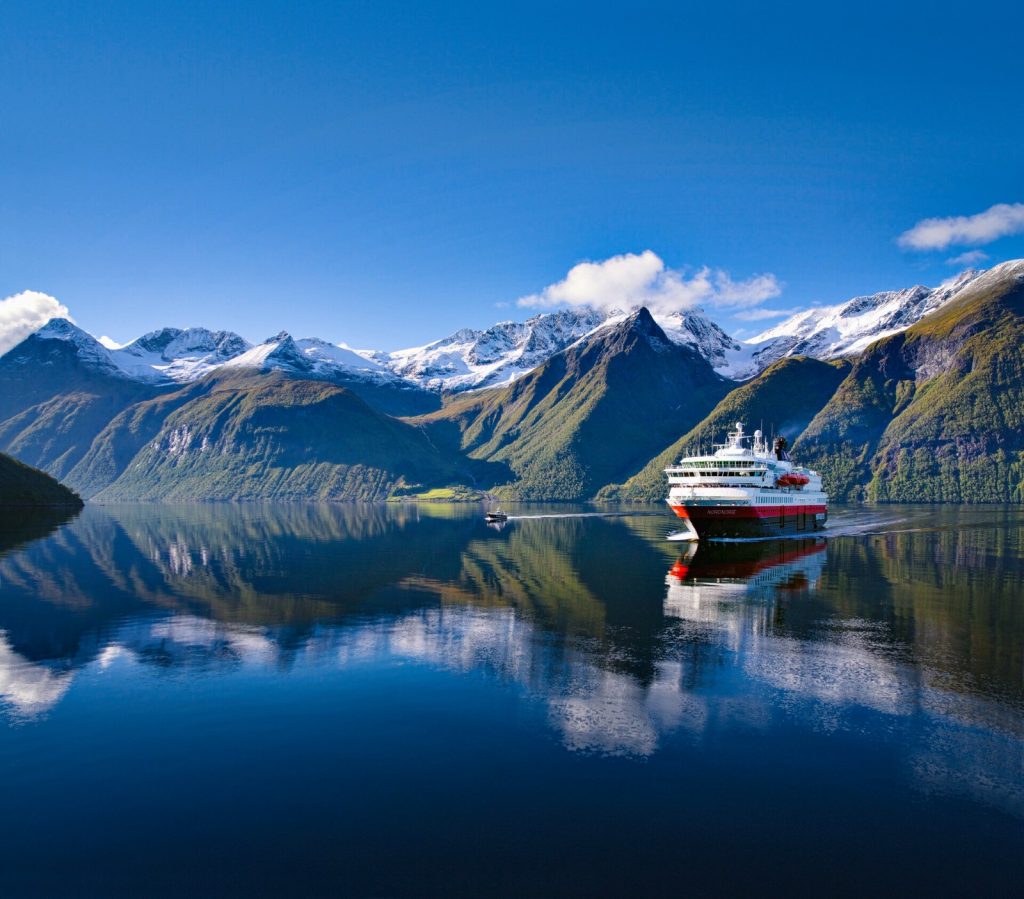
Hurtigruten Group was established in 1893 by Norway’s government as a means for connecting people living along the country’s jagged coastline and fjords, shipping goods, and delivering mail. Nearly 130 years later, the company has emerged as the most innovative, technologically advanced, and sustainable cruise line in the world. Led by CEO Daniel Skjeldam, Hurtigruten Group now operates excursions across the globe to Antarctica, the Galapagos Islands, Alaska, the Caribbean, and an array of local routes in its home market. As the company has broadened its global footprint, Skjeldam has guided Hurtigruten Group from a small shipping company into the world’s leading sustainable adventure travel company.
It’s no secret that traditional cruise ships are considered one of the biggest polluters per square foot, so it’s worth noting that Hurtigruten Group is bucking that trend with an array of eco-friendly initiatives, the most notable of which is its commitment to sustainable power. In 2019, Skjeldam announced that, in partnership with Rolls Royce, nearly the entire Hurtigruten fleet would convert to hybrid battery-powered ships. The MS Fridtjof Nansen, for example, was named by an independent body as the safest and most sustainable cruise ship in the world. Moreover, the company recently unveiled plans for the first zero-emission ship to sail in 2030. Hurtigruten Group’s move to adopt clean power tech at sea sent ripples throughout the cruise industry, leaving larger competitors scrambling to play catch-up.
3. Mortenson Construction: Building a More Sustainable Future
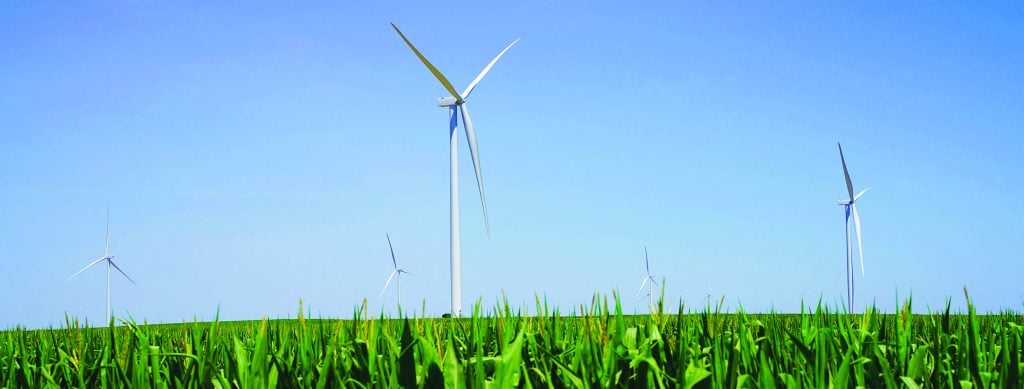
With annual revenues approaching $5 billion, Mortenson is one of the top 100 largest private companies in the United States. Although Mortenson is best known for high-profile megastructures like the U.S. Bank Stadium in Minneapolis or the expansive Marriot Gaylord Rockies Resort & Convention Center in Colorado, it’s the company’s work in alternative energy that has made it a standout. “It’s pretty simple—addressing climate change and sustainability is in our collective best interest,” said Chairman David Mortenson. “We started in the mid-’90s with our first wind turbine, and now, 30 years later, well over a third of our business is in alternative energy—and it’s one of the fastest growing segments of our portfolio.”
Mortenson has developed a reputation as the country’s most experienced builder of wind turbines, solar farms, and large-scale energy storage systems in the U.S. Xcel Energy selected Mortenson to construct the Rush Creek Wind Project in Limon, Colorado, the largest single-phase wind project in the United States. Mortenson is also the driving force behind the Edwards & Sanborn solar project in Kern County, California, slated to be completed in 2023. It will generate 950 megawatts of solar energy and provide 2,400 megawatt-hours of energy storage, effectively making it the largest single solar and battery energy storage project. And in the business of industrial battery facilities, the company’s work on the DeCordova Energy Storage system in Texas, the largest energy grid in the state, has become a window into the future of clean energy storage at scale.
4. Patagonia: The Gold Standard for Corporate Environmental Responsibility
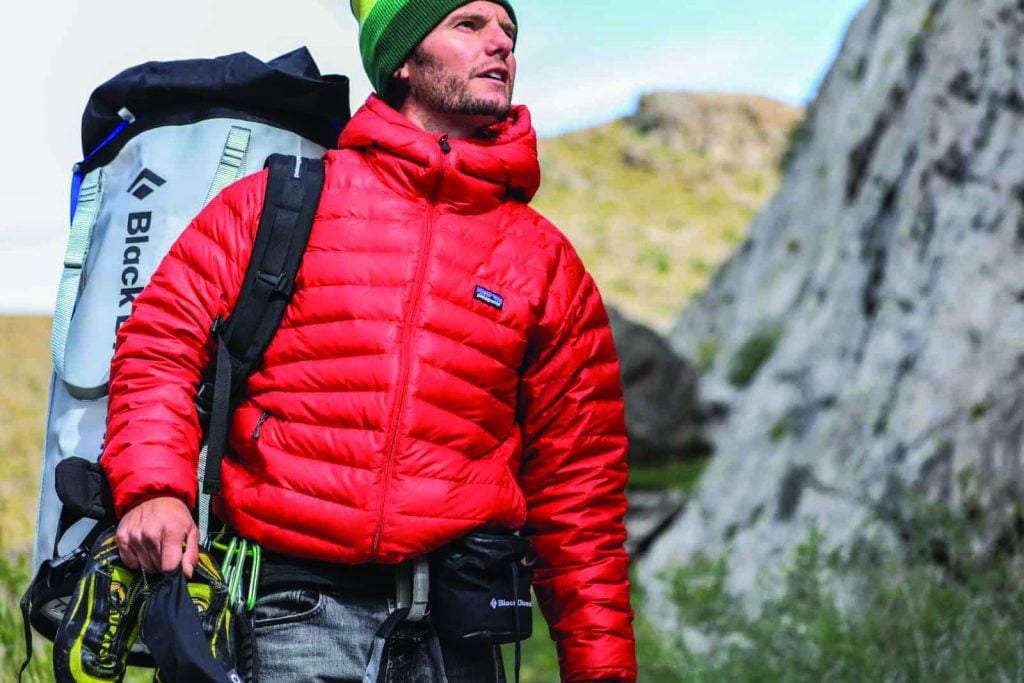
Just when the world thought Patagonia could not do more for the environment or the planet than it has already done, the company stunned the industry by giving away the $3 billion company. Snubbing profits over purpose, the company created a specially designed trust and a nonprofit organization that will be focused on combating climate change and protecting undeveloped land around the globe. Earth is its only stakeholder. Chouinard, who founded the company in 1973, needed a succession plan that would continue the efforts put forth by the company for half a century. Prior to this astonishing announcement, the company had already achieved B-Corp status and was the pioneer in reducing growing consumerism. With the fashion and apparel industry being one of the world’s biggest polluters, Patagonia’s forays into second-hand clothing with its Worn Wear program and its groundbreaking self-imposed earth tax of 1 percent of global sales. These funds are directed at sustainability initiatives helping to redefine what it means for apparel companies to be environmentally focused. Patagonia’s lasting legacy will be its influence on the industry at large—most acutely on its direct competitors. Because of the example set by Patagonia, brands such as The North Face and Arc’teryx have been coaxed into following their lead (sometimes resulting in risible yet virtuous battles of green one-upmanship).
5. Panera Bread: Cool Meals for an Overheated Planet

Sara Burnett, the VP of sustainability at Panera Bread, ensures that the privately-held fast-casual restaurant chain continues to innovate along an increasingly sustainable path. A decade ago, Panera became the first major chain to disclose the number of calories in each dish. In 2020, it became the first to deploy carbon labeling indicating the environmental impact of each menu item purchased by its customers. This move was partially inspired by a 2019 UN report that pointed the finger at the global food system’s role in global warming, which accounts for over a third of all greenhouse gas emissions. Burnett, along with Panera’s CEO Niren Chaudhary, and the company’s R&D team, overhauled the menu to offer an array of so-called “cool foods”–dishes (served at any temperature) that negatively affect the minuscule carbon footprint. Carbon-friendly food, it turns out, is good for the planet and business; recent reports found that 6 in 10 Americans say that sustainable food is important to them and a significant driver of brand loyalty.
6. Bentley Motors: Where the Apex of Automotive Performance Meets Sustainable Luxury
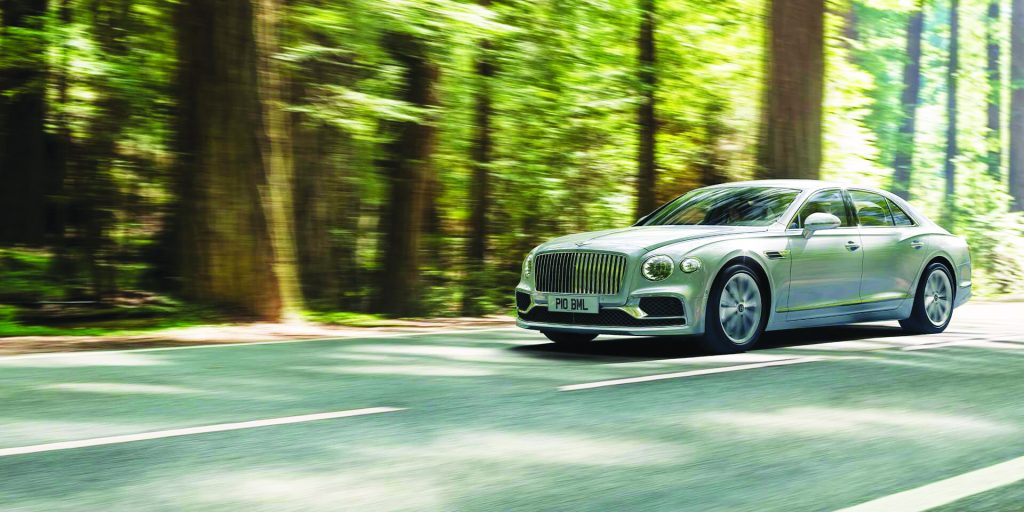
Since 1919, Bentley has been synonymous with supreme automotive performance and luxury grand touring. But this classic brand from Crewe, England, is chiseling out the third pillar to its already stellar reputation: sustainability. Led by Bentley’s global CEO Adrian Hallmark and Christophe Georges, the president and CEO of Bentley Americas, this brand has laid out perhaps the most aggressive timeline among its peers for converting to an all-electric fleet. By 2025, every new model of Bentley will be offered in a hybrid version; by 2026, all new models will be provided only in hybrid or all-electric models. Bentleys will be 100 percent electric by 2030.
But Bentley’s commitment to sustainability goes beyond the manufacturing of EVs. At its factory in Crewe, they are incorporating an array of ambitious sustainability initiatives. These include installing over 30,000 solar panels and several waste management and recycling programs that will allow them to become plastic neutral by 2025. Bentley is well toward achieving its broader vision of becoming a climate-positive factory, an astonishing feat for a carmaker.
7. Yeti: Hard Goods Built to Last

Coolers and tumblers are probably not the first things you think of when you think about the environment. But for Matt Reintjes, the president and CEO of YETI, addressing the environmental costs of plastics and poorly-made products is what it’s all about. “YETI was founded to create a better cooler with unmatched performance and durability that could survive outdoor adventures better than the flimsy coolers on the market, which often ended up in the trash after a few uses.” Part of the customer appeal of YETI’s famous drinkware line is its value as an alternative to single-use, disposable plastic cups and thermoses. Importantly, Yeti is taking this “kick single-use” ethos and expanding it into new product categories beyond coolers. One hundred percent of YETI packaging will be recyclable, reusable, or compostable by 2025–which is a big deal given the company’s growth trajectory. In 2020 YETI surpassed $1 billion in revenue and in 2021 reached global sales of $1.4 billion.
8. Toro: Harnessing Massive Reach and New Tech for Maximum Impact

When you hear the name Toro, the image of one of their iconic cherry red lawn mowers or the buzz of a weed whacker likely comes to mind. But in recent years, the Bloomington, Minnesota-based leader in lawncare has dived head-first into electrification. Its Flex-Force power system of interchangeable, battery-powered yard equipment has given it a certain ‘Tesla-like’ status in neighborhoods across the country. Its new autonomous robotic mower, set to launch in 2023, will redefine the industry as it ushers in what Toro calls ‘smart-yard’ technology that connects sustainable watering, lighting, and lawn care all from the convenience of a single app.
But less well known to the public and of even greater importance both financially and in terms of environmental stewardship is the company’s advanced professional irrigation and water management systems that serve some of the world’s most renowned golf courses, sports fields, landscaped parks, and essential agricultural acreages. From the 36 holes at Singapore’s famous Sentosa Golf Club to Disney properties to farmlands across the globe, Toro has successfully positioned itself as an end-to-end provider supporting the entire growing lifecycle of millions of acres of the earth’s surface. Company Chairman and CEO Rick Olson, who worked his way up through the company ranks, fully understands how Toro’s massive reach uniquely positions it to have an impact. Since assuming the top leadership role in 2016, Olson has reoriented the company around a series of bold sustainability goals it holds to in its annual sustainability report.
9. Ecolab: Water Preservation at Scale
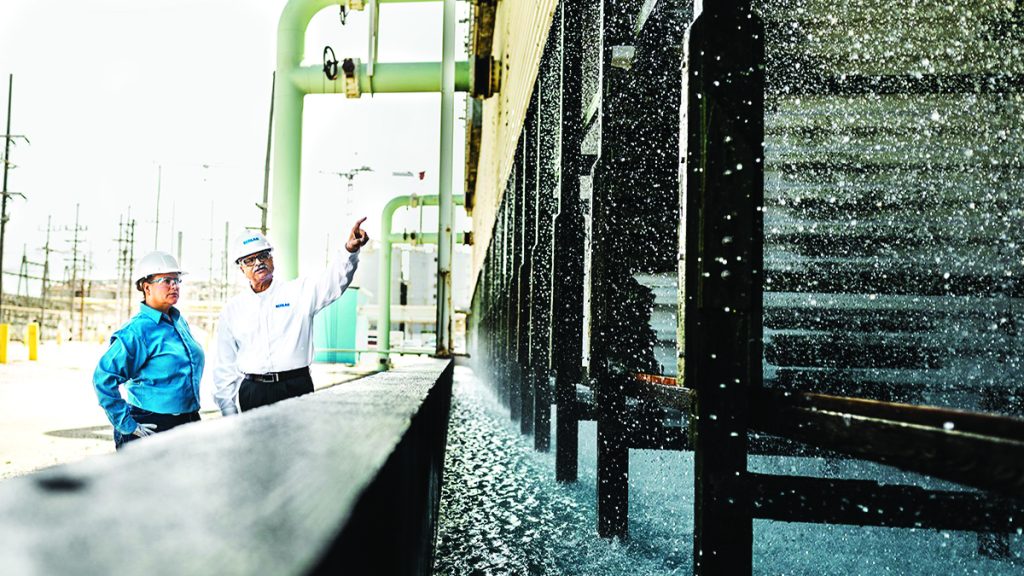
For years we have been hearing academics and pundits make predictions about the future of water–clean potable water, specifically. “The Wars of the Future Will Be Fought Over Water, Not Oil,” read one particularly memorable headline published in the New York Post. Hyperbolic guesstimates aside, it’s clear that the issue of water preservation is and will continue to be central to many meaningful environmental impact programs. Sitting at the intersection of large-scale water management and sustainability initiatives is Ecolab, a $15 billion a year company specializing in water treatment, purification, cleaning, and hygiene in various applications. Every major corporate water preservation initiative in the news, from the Manchester United football club to Kraft Heinz to Hilton Hotels, has Ecolab’s fingerprints.
One salient example of Ecolab’s impact was its recent work with Exelon, the largest energy company in the United States. Exelon Generation, the nuclear power division of the company, had set an ambitious goal of providing safe, clean, low-cost nuclear energy while protecting the environment. To bring that goal to fruition, Ecolab’s Nalco Water division was brought in to transform how the company utilized water—a core aspect of any nuclear power operation. Ecolab’s work resulted in reducing millions in direct costs for Exelon and saving the company billions of gallons in annual water usage.
10. Colgate-Palmolive: Taking Ownership on a Global Scale

Ann Tracy, the chief sustainability officer at Colgate-Palmolive, is not one to mince words. “With a brand in more homes than any other, we are reimagining a healthier future for all people, their pets, and our planet,” Tracy said. She is referring to the company’s $17 billion consumer goods empire encompassing everything from toothpaste to dog food to household detergents. “We have arguably the largest consumer reach on the planet—six in ten households on the planet use Colgate products—which is why it’s on us to offer consumers products that are better for the planet. It’s our responsibility.” To that end, the company embarked on a significant journey to reexamine every business unit and function, from sourcing to packaging and shipping, to see how each product and process could lower the company’s overall environmental impact.
Colgate sells 9 billion of the estimated 20 billion tubes of toothpaste sold worldwide each year–exemplifying the innovation and success they have found companywide. From moving to a first-of-its-kind recyclable tube (a technology Colgate even shared for free with competitors to hasten global adoption) to launching chewable toothpaste tablets into the market, which cut down on shipping water, Colgate is not afraid to upend the status quo if it means lowering the environmental footprint of its products.

